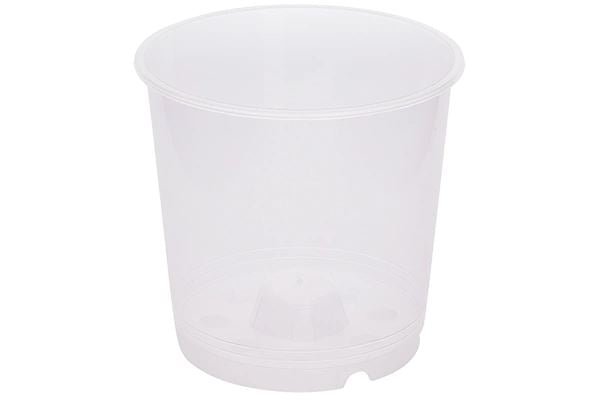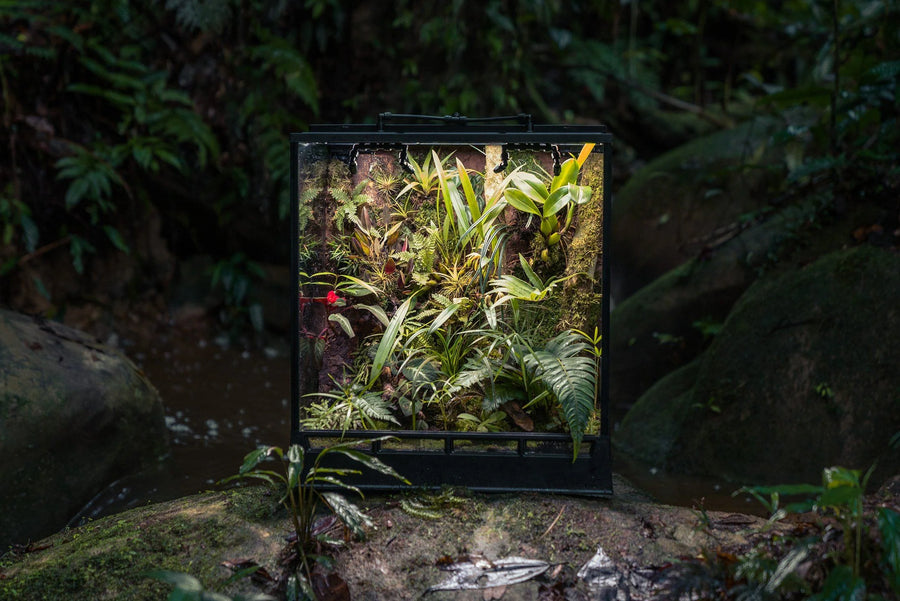Epipremnum | Pothos
Epipremnum, commonly known as Pothos or Devil’s Ivy, is a tropical evergreen vining species belonging to the Araceae family. Native to the Solomon Islands, French Polynesia, and Southeast Asia’s rainforests, this houseplant thrives in warm, humid environments where it climbs trees using aerial roots or spreads across the forest floor. In its natural habitat, Epipremnum can grow leaves over 3 feet long, but as a houseplant, its foliage remains smaller and more manageable.
Though often confused with Scindapsus (another popular trailing plant), Epipremnum is a distinct genus. Scindapsus leaves tend to have a velvety texture and silver markings, while Epipremnum varieties feature glossier foliage and bolder variegation.
💡 Like many Araceae plants, Epipremnum contains calcium oxalate crystals, which are toxic to pets and humans if ingested. Keep it away from cats, dogs, and small children.
What Light Is Best for Epipremnum?
Epipremnum thrives in bright, indirect light but tolerates low-light conditions (though variegation may fade). Avoid direct sun, which scorches leaves. In dim spaces, opt for solid-green varieties. You should also rotate the plant monthly to ensure even growth on all sides.

What Humidity Is Best for Epipremnum?
Epipremnum aureum naturally thrives in the warm, moist understories of tropical rainforests, so it prefers moderate to high humidity. For healthy, vibrant growth indoors, aim for humidity levels between 50% and 60%. While Epipremnum is somewhat adaptable and can tolerate average household humidity, consistently dry air can lead to crispy leaf edges, browning tips, or stunted growth, especially in winter when indoor heating reduces moisture in the air.
Water only when the top 2–3 inches of soil are dry and allow excess water to drain. Overwatering leads to root rot, while underwatering causes wilting. Use your finger or a moisture meter to test soil dryness. Reduce watering frequency in winter when the plant has paused growing.
Soil and Repotting
A well-draining, aerated mix is critical. Our Jungle Mix combines coconut coir, perlite, and orchid bark to prevent waterlogging while retaining nutrients. Repot when needed in spring, ideally before the plant becomes root-bound.

Feed monthly during spring and summer with a balanced liquid fertiliser (e.g., 10-10-10) diluted to half-strength. Over-fertising can burn roots, so flush the soil with water every few months to remove salt buildup.
Propagating Pothos
Pothos plants are by far the most easiest houseplants to propagate! They are known to produce natural rooting hormones, which are auxins, that stimulate faster root growth. Here’s our foolproof method:
-
Take a Cutting: Begin by cutting a healthy 4-6 inch stem from the plant, ensuring it has at least 2-3 nodes. Nodes are the small bumps on the stem where leaves emerge and are crucial for root development.
-
Place the Cutting: After cutting, place the stem in either clean fresh water or moist soil. If you choose water, ensure the nodes are submerged, but the leaves remain dry to prevent rot. We suggest changing the water once every 7-10 days. If planting in soil, ensure the cutting is kept in a warm, humid environment. Roots should begin to form within 2-4 weeks.
-
Transplant the Cutting: Once the roots have grown to about 2 inches long, carefully transplant your cutting into well-draining soil. Make sure the new plant has enough space to grow and establish itself. To reduce shock, keep the soil constantly moist for the first month.
For a fuller, bushier plant, consider propagating multiple cuttings and placing them together in one pot. This will encourage a dense, lush appearance as the new roots intertwine and support the growth of each cutting.
Common Problems When Growing Pothos (and How to Fix Them)
Yellow Leaves
If your pothos is sporting yellow leaves, the most likely culprit is overwatering or poor drainage. Pothos like their soil to dry out between waterings—soggy roots can suffocate and begin to rot. Check the bottom of the pot for drainage holes. No holes? That’s a problem. Also, inspect the roots: if they look brown, mushy, or smell foul, you’re dealing with root rot. Trim away damaged roots and repot the plant in fresh, well-draining soil. A mix that includes perlite, orchid bark, and coco coir works well.
Leggy Growth
If your pothos looks thin, with long spaces between leaves, it’s likely not getting enough light or hasn’t been pruned in a while. Leggy growth means the plant is stretching toward light. Move it to a brighter spot—indirect sunlight is ideal. Regular pruning encourages bushier growth by activating dormant nodes. Just snip above a leaf node (where the leaf meets the stem) and use those cuttings to propagate new plants in water or soil. Win-win.
Pests
Pothos are hardy, but even tough plants get stressed, and stressed plants are magnets for pests. Look out for sticky residue, webbing, or cotton-like clumps on leaves and stems. These are signs of spider mites, mealybugs, or scale insects. Don’t wait it out. Wipe the leaves with a damp cloth, then follow up with neem oil spray or insecticidal soap every few days until pests are gone. Isolate the plant from others during treatment to prevent spreading.
Root Rot
Root rot is a silent killer. It often goes unnoticed until the plant starts to decline—drooping, yellowing, or blackening at the base. The cause? Waterlogged soil and a pot with no drainage. Always use containers with drainage holes. And don’t just grab any old soil Pothos prefer a chunky, airy mix to keep roots healthy and oxygenated.
Shop all potting mixes here.
💡Dust your pothos leaves once a month using a damp cloth. Clean leaves can absorb more light, which boosts photosynthesis. This results in a healthier, faster-growing plant. It also makes it harder for pests to hide and breed.
Whether trained up a moss pole or spilling from a hanging planter, Epipremnum’s adaptability makes it a standout houseplant. With proper care, it can thrive for decades, purifying your air and adding a touch of the tropics into your home.
Ready to turn your home into a jungle? Explore our full range of Pothos plants here →






